
Djara Cave In Egypt
It is one of the most important caves in the world It is located in the western desert of Egypt
- Djara Cave is one of the very few well decorated caves in Egypt . It has the natural result of pure water in contact with the dry desert climate , over millions of years
- The Gara Cave is a group of caves located more than 50 meters deep in the ground in the heart of the Western Desert between Bahariya Oasis and Assiut ” The cave’s entrance, which is in the form of a small opening at the surface level of the limestone plateau where it is located, gives the impression that the visitor is descending into a small limestone basin that leads to a small, narrow corridor that forms a landing pad filled with sand that is blown into the cave by the wind
- is one of the most beautiful caves in the world, located in the Egyptian Western Desert near the Farafra Oasis in the New Valley Governorate. The cave was discovered in 1873 by a German explorer (Gerha Red Rolfes), and it is known for its geologically significant stalagmites and stalactites.We go over the 9 most essential facts about Al-Jara Cave in the Western Desert of the New Valley as a group.
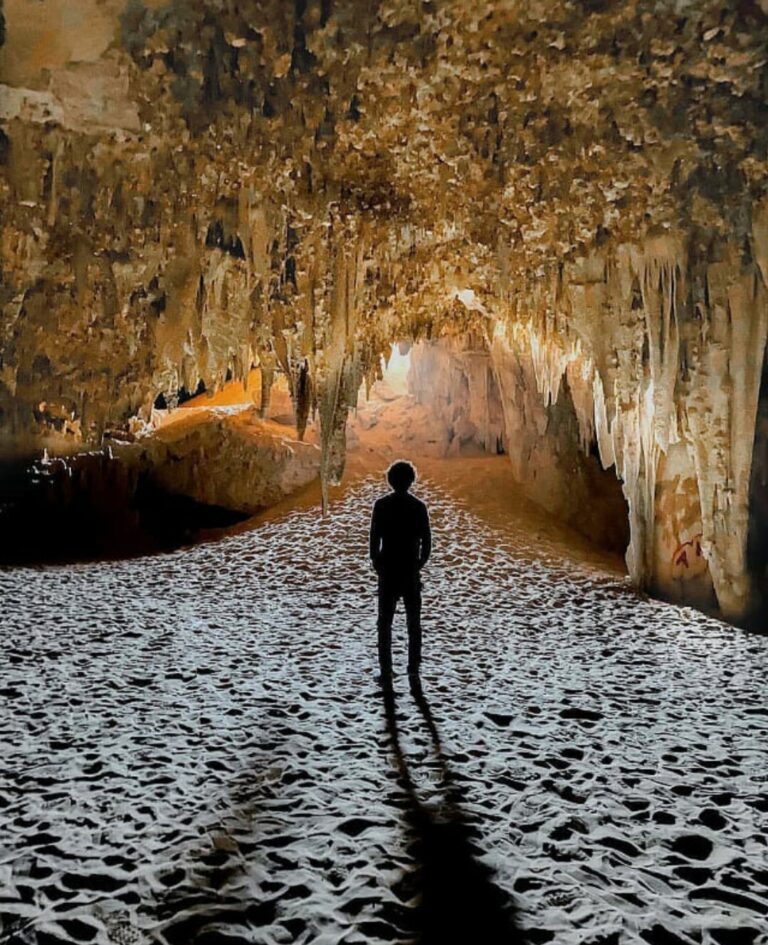
- specifically on the twenty-fourth of December 1873, the German explorer { Gerhard Rolfes } arrived in a secluded area located between the New Valley of the Western Desert and Asyut. While he was on a three-month exploration trip in the Western Desert, a severe storm hit him, and his guide in the desert pointed him to this cave to take shelter in. He was surprised by a strange gate in the interior of that plateau
- The German explorer-{ Gerhard Rolfes }- dared to enter the neighbor’s cave, and then wrote in his writings on the Western Desert that he had seen dozens of human inscriptions, and it seems that this cave was home to some of the first humans who inhabited that area, or they may have passed through it as he passed.


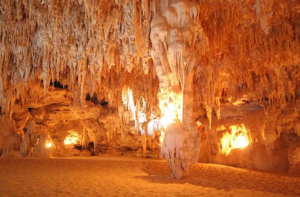
Previous
Next
- The cave is filled with what are called geologically the sediments of stalagmites and stalactites, as well as drawings of primitive men from hunting and special games, which indicate that the area in these ages was inhabited and had a normal life.
- Thousands of years ago, the cave area was not a barren desert area, but rather had water, planting, grazing, and a normal human life. This included human drawings, cows, hunting machines, arrowheads, spears, stone daggers, and evidence of the abundance of water in the area and the presence of stalagmites and stalactites from calcium salts inside the cave.
- The Gara Cave is a group of caves located more than 50 meters deep in the ground in the heart of the Western Desert between Bahariya Oasis and Assiut ” The cave’s entrance, which is in the form of a small opening at the surface level of the limestone plateau where it is located, gives the impression that the visitor is descending into a small limestone basin that leads to a small, narrow corridor that forms a landing pad filled with sand that is blown into the cave by the wind
- specifically on the twenty-fourth of December 1873, the German explorer { Gerhard Rolfes } arrived in a secluded area located between the New Valley of the Western Desert and Asyut. While he was on a three-month exploration trip in the Western Desert, a severe storm hit him, and his guide in the desert pointed him to this cave to take shelter in. He was surprised by a strange gate in the interior of that plateau
WESTERN DESERT SAFARI TOUR
Djara Cave And White Desert itinerary
02 NIGHT : 03 DAYS DESERT SAFARI TOUR
Day 1 - From Cairo To Bahariya Oasis White Desert
- Cairo Depart early in the morning at 7am to Bahariya oasis about 360 km east Cairo takes about 4 hours then arrived in Bahariya oasis will Have lunch and continue be 4×4 visit the- Black Desert- Crystal Mountain and the beautiful site of El Agabat – in time to magnificent sunset and explore the area Set up Bedouin campsite Enjoy dinner around the campfire. under the stars ‘ Bedouin tea and enjoy each other story ‘
Day 2 - Djara Cave
- sunrise over the desert. Breakfast will be served in the desert at 7:00 a.m., followed by a trip to El Khor Mountain, 70 kilometres off-road from Aqabat Valley, arriving at 10:00 a.m. It’s a spectacular sand dune area. Drive to Sahel Baraka at 11:00 a.m. and drive to Djara Cave, Visit and lunch will be served and go visit Magic Springs – Old White Desert -New White Desert for sunset and explore the area Set up Bedouin campsite Enjoy dinner around the campfire. under the stars ‘ Bedouin tea and enjoy each other story ‘
Day 3 - Baharya Oasis To Cairo
- After breakfast, explore the New White Desert and its limestone formations – Hot water spring Return to Bahariya oasis have lunch and back to Cairo in the afternoon.

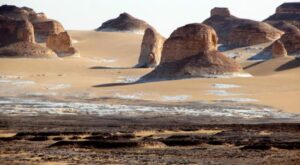
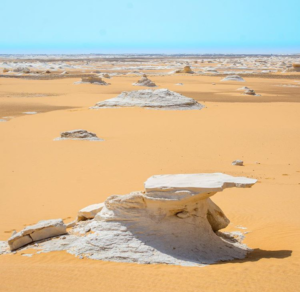



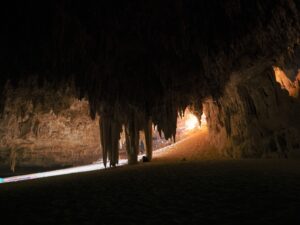
Previous
Next
INCLUDED
- Pick-up and drop off services from/to your hotel
- Tours by private Jeep 4X4 to the White and Black Deserts
- Desert camping for one night
- English speaking driver
- All camping equipment and tents
- All meals (breakfast, lunch, and dinner)
- Beverages including mineral water and tea
NOT INCLUDED
- Tips fpr the staff
- Entrance fees to the National Park of the White Desert
- Alcohol drink
- Marketing shop
- Pick Up / Drop Off From Cairo Airport
- White Desert Tour is here to provide support to Travel Lovers and make sure our customers will get unforgettable Memories and Moments while visiting Egypt and even after return, as you’ll find unbeatable Activities for all ages and interests, so whichever tour activity you are thinking we help you select your destination and tailor it to match your budget and travel style with the best facilities and standards, Quality is our top priority and your satisfaction is our aim.
